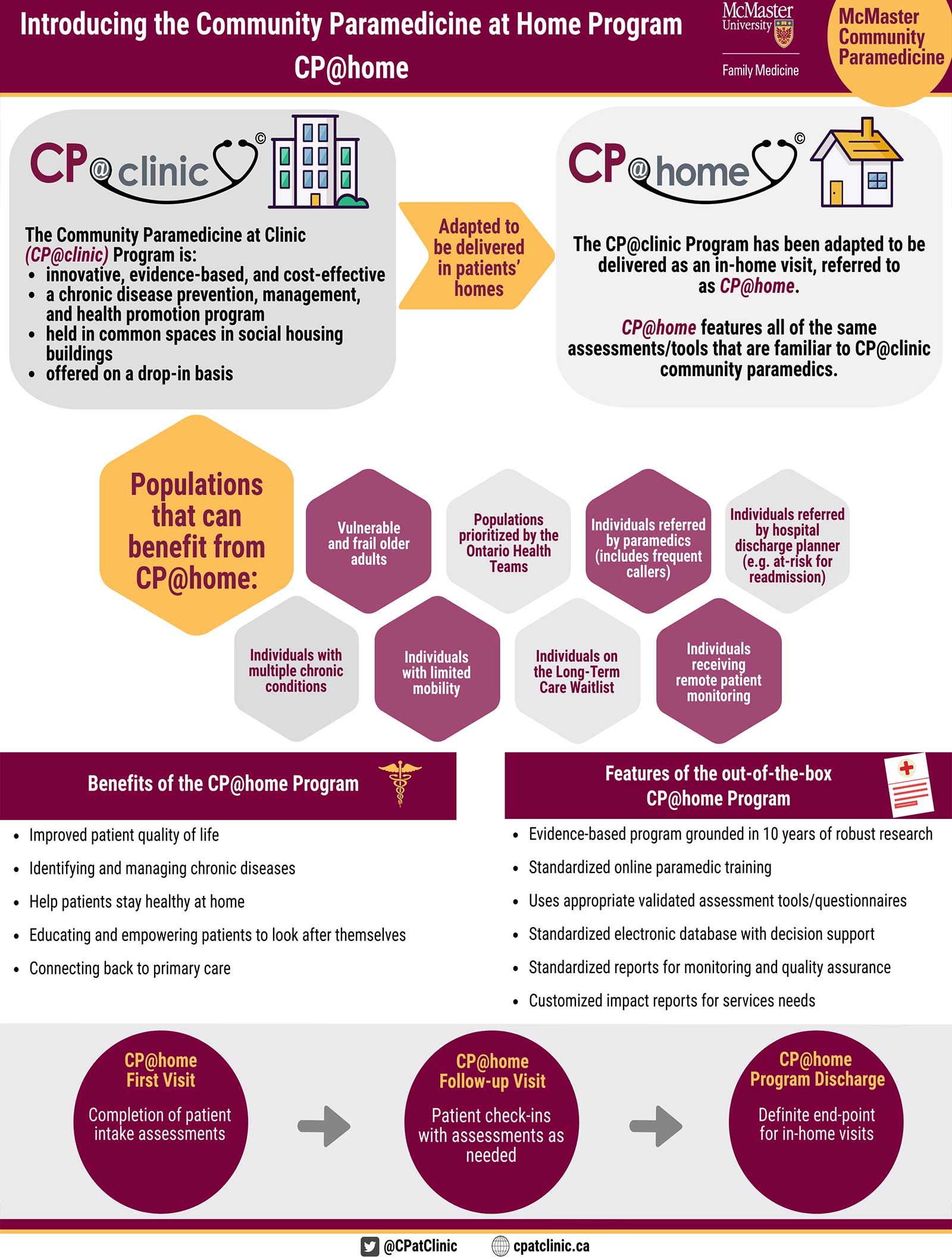
Community Paramedicine at Home (CP@home):
Paramedic Services Delivery Model Expansion adapting the CP@clinic Program to an in-home visit: CP@home
- conduct several evidence-based health assessments
- provide referrals to primary care and community resources
- assist participants in navigating the health care system
- provide participants with tailored health education
- engage participants in healthy lifestyle discussions
- set health goals with participants
With consent, the participant’s health assessment results are shared with their primary care provider. Paramedics will connect with any community resources to help facilitate participant referrals. Participants are encouraged to continue CP@home sessions to follow up regarding risk factors and program referrals.
Populations that will benefit from this adaptation include:
- frail older adults
- individuals referred by paramedics (including frequent callers)
- individuals referred by hospital discharge planners at risk of readmission to hospital
- individuals with limited mobility
- individuals on a Long-Term Care Waitlist
- individuals receiving remote patient monitoring
Infographics
COVID 19 Pandemic and CP@clinic
CP@home is an adapted version of the CP@clinic program. Its implementation includes Virtual, home visit, and in-person program sessions/clinics in accordance with public health guidelines, guided by the advice of the CP@clinic Executive Committee and our CP@clinic partners, and based on the following principles:
Safety
The safety of Community Paramedics implementing the program and older adults participating in the program is paramount.
Compliance
Adaptability
Virtual
To protect the vulnerable populations we work with, we will offer virtual program delivery options to reduce the risk for exposure to the COVID-19 virus and to provide equitable access to our program.
Especially during these unprecedented times, we are making it our mandate to provide equitable access to our program to all older adults connected to our CP@clinic program sites. Both existing and new CP@clinic participants are welcome.







